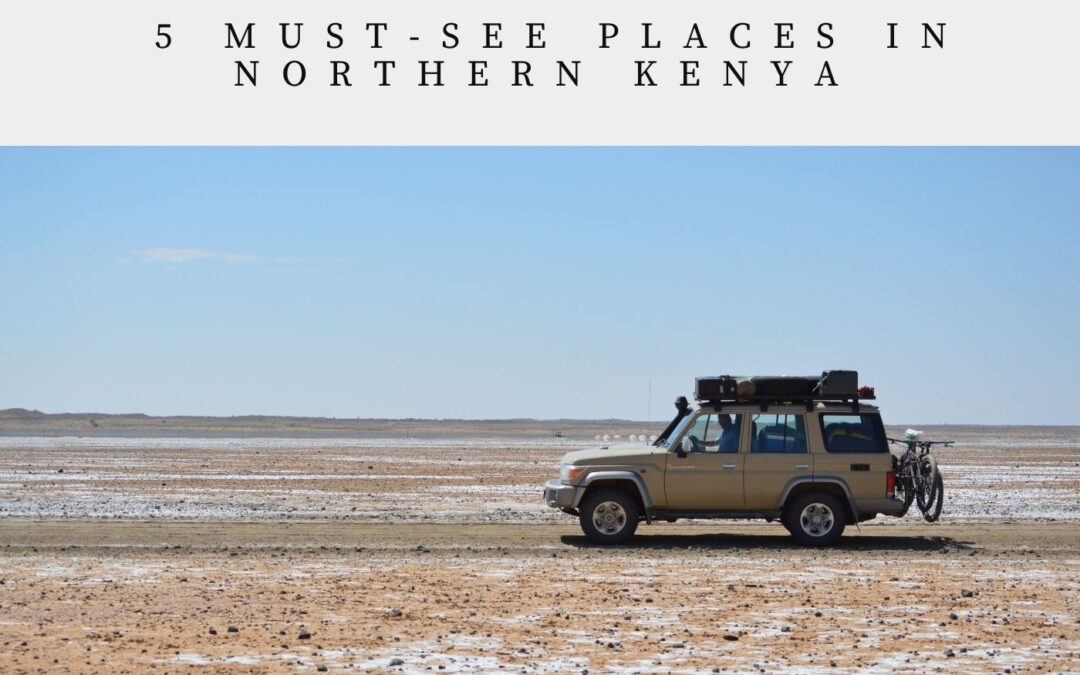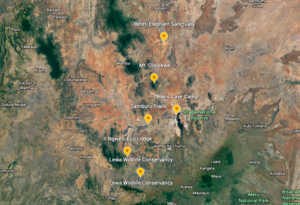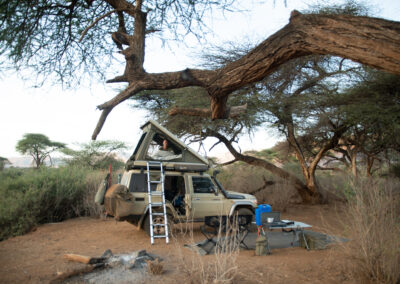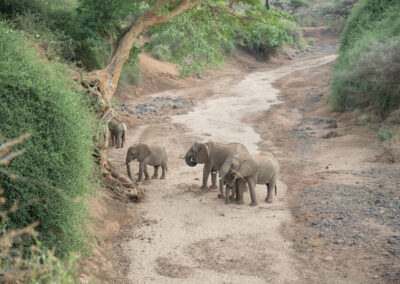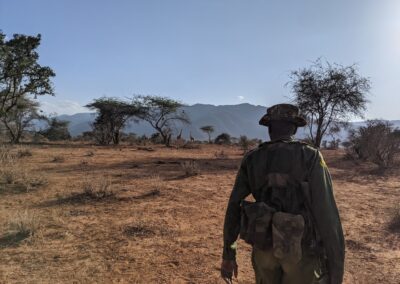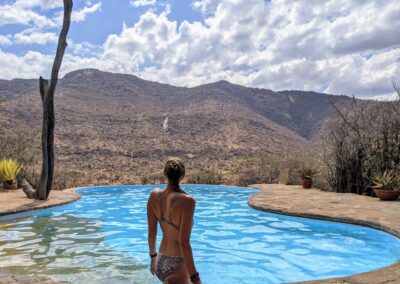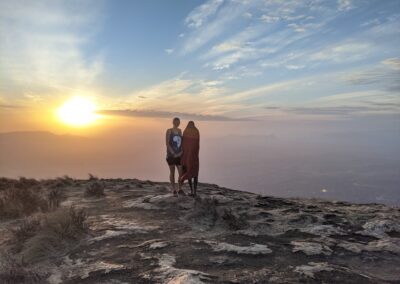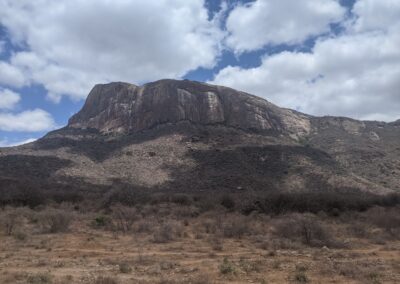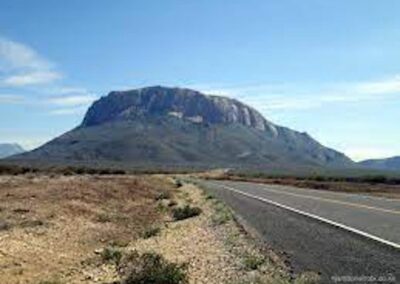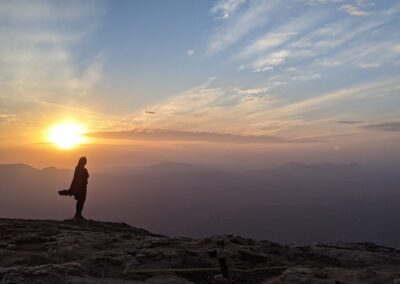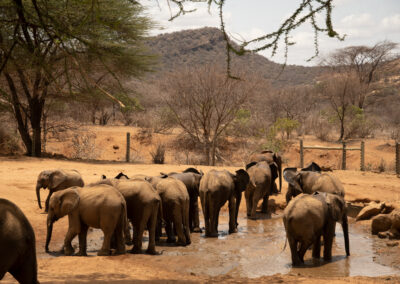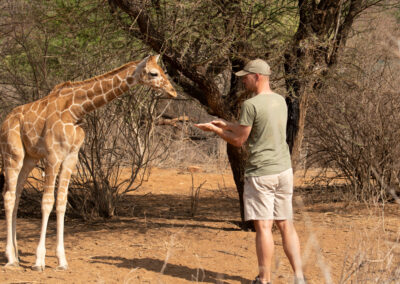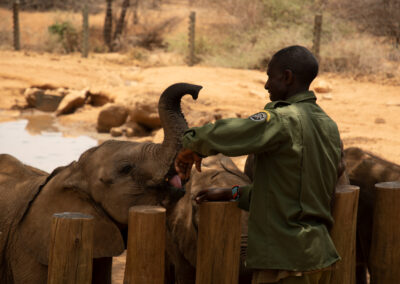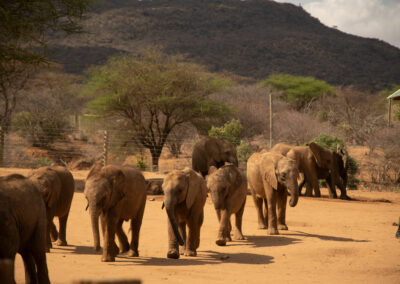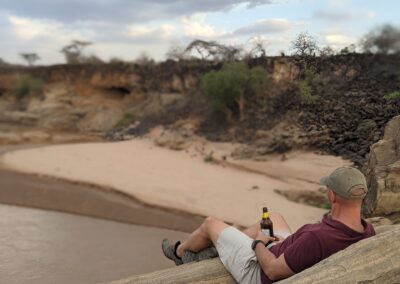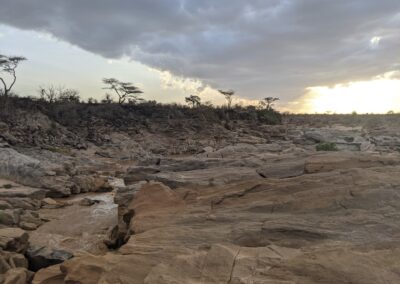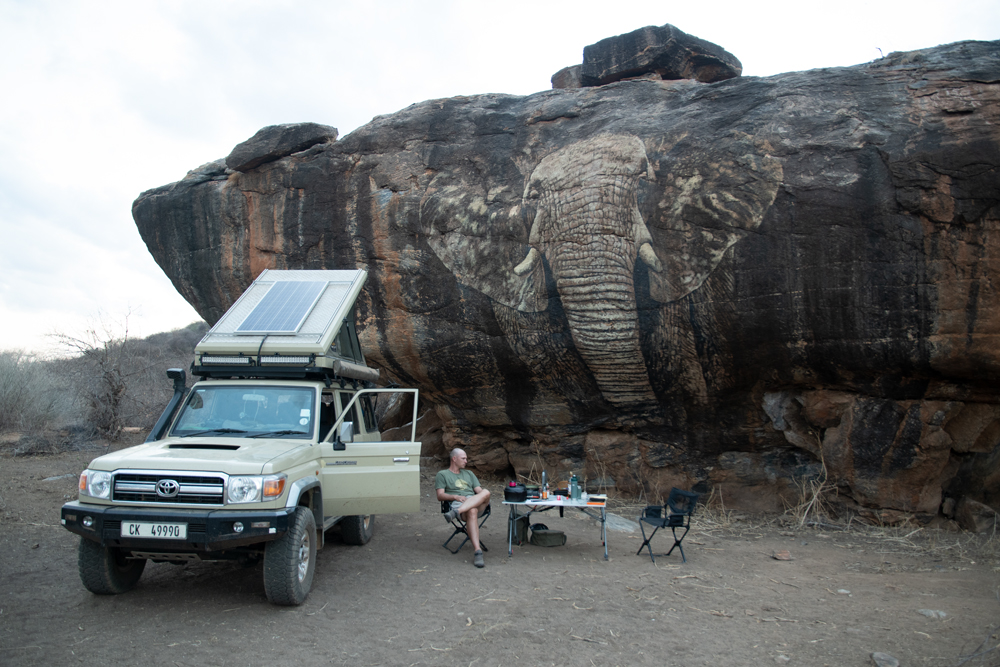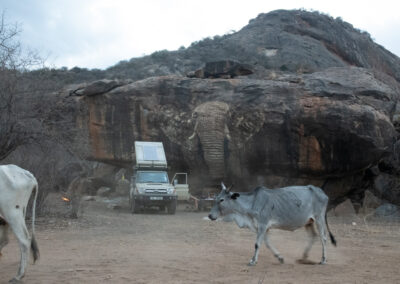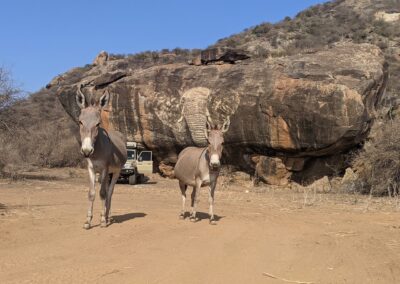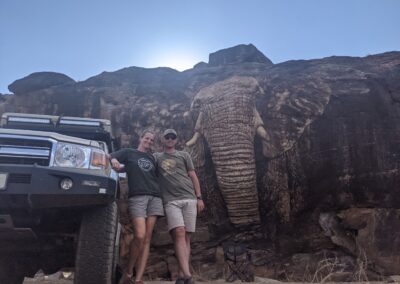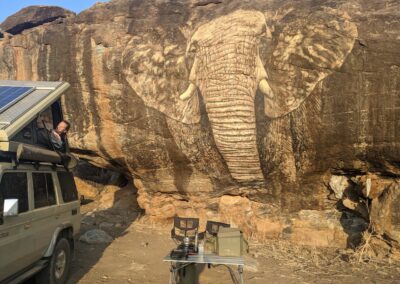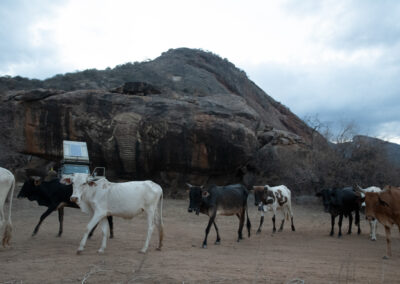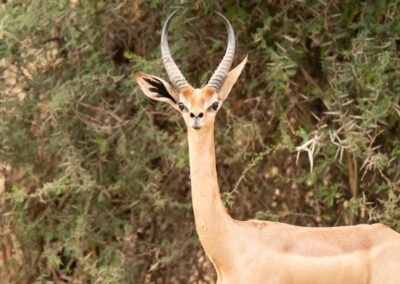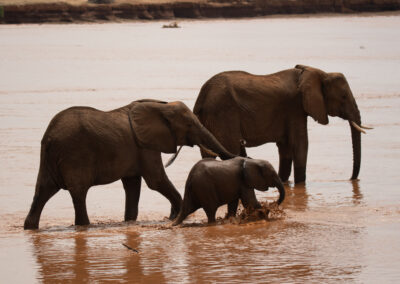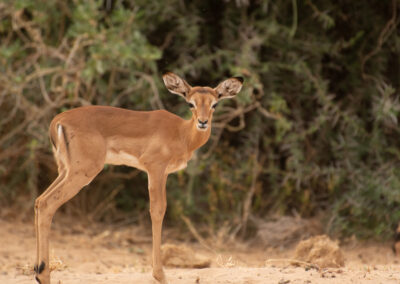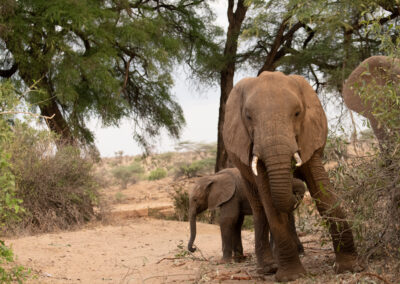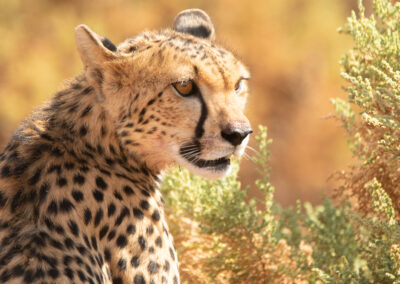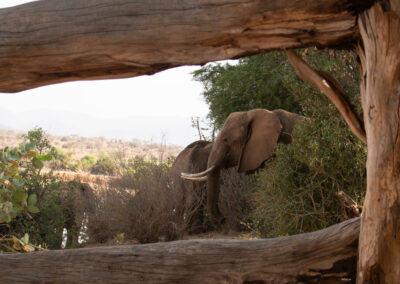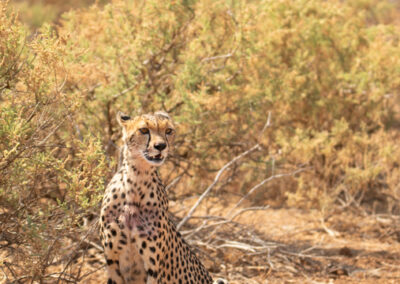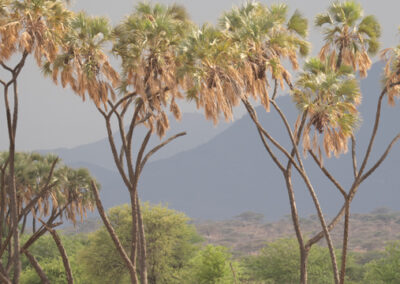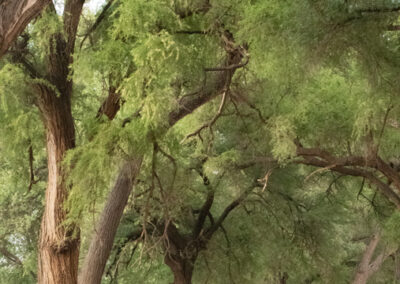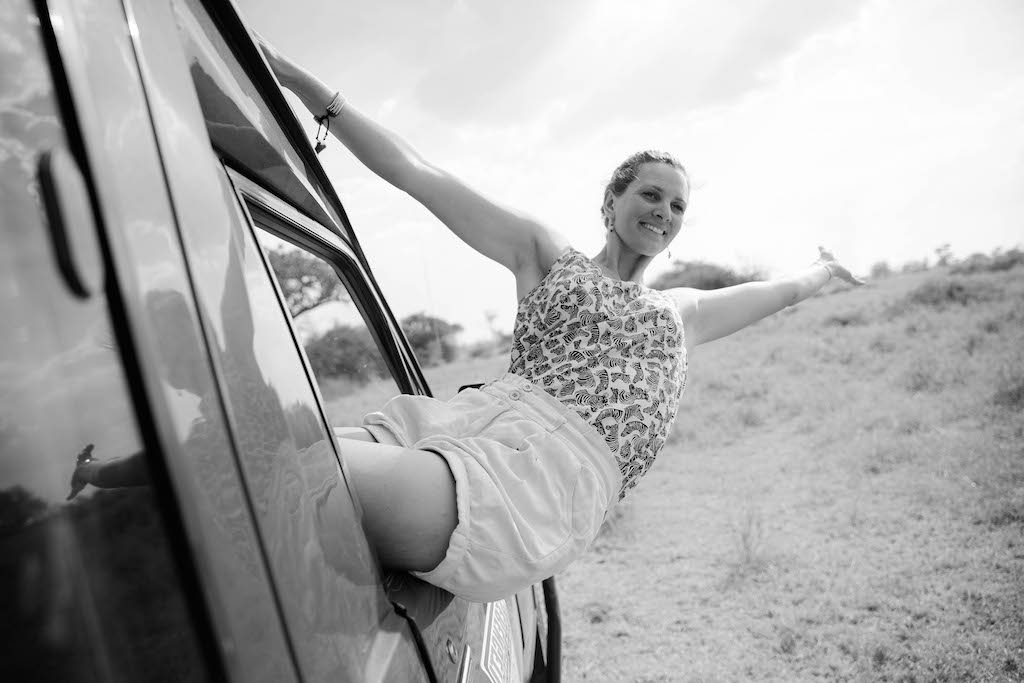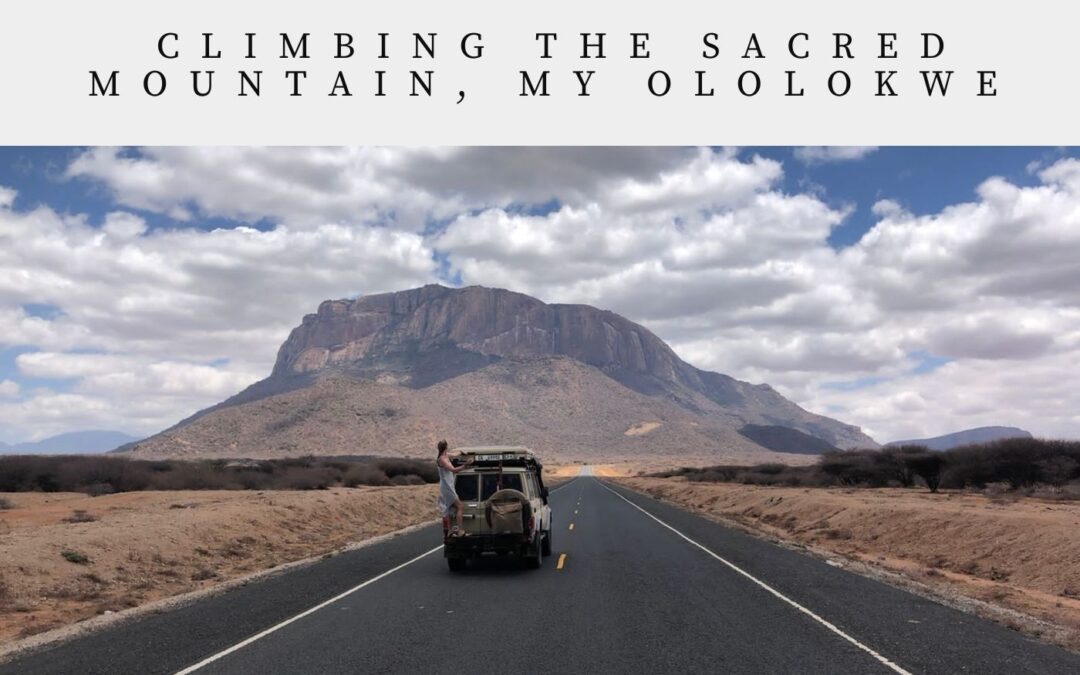
Climbing the Sacred Mountain, Mt Ololokwe
Climbing the sacred mountain, Mt Ololokwe was a highlight of our northern Kenya Road trip. I always love being able to get out of the car on our road trips and get out and do some exercise and this hike was no stroll in the park.
Our alarm was set for 3:14 am as we were starting our walk at 4:00 am. However, it wasn’t even 2 am before we were woken up by elephants eating from the trees right next to our car (and consequently us as we sleep in a rooftop tent). The noise from them eating was incredibly loud, the elephants were at eye level with us as they crashed and barged their way through the trees. I managed to go back to sleep for under an hour before the alarm sounded and we were up.
The night before we had boiled water and put it in a Stanley flask so it was still piping hot. We made tea and coffee, had some light breakfast and then we were off. We carried a small backpack, packed with snacks and water and each had a head torch, an essential item.
We found Jackson, our guide, sleeping. He heard us coming and simply wrapped his shuka (Maasai blanket) around him, put on his tyre sandals, picked up his torch and stick and we were off! I wouldn’t normally take a stick as I don’t like having something extra to carry. However, we had been on a walk the day before and I had seen how steep it was and decided a stick was a good idea.
Hiking in the dark
The entire walk to the top is in the dark, that is if you’re quick enough to get there before sunrise! This was clearly something Jackson was worried about. Consequently, the walk was definitely not at the usual pole pole (slowly slowly) pace that I am used to out here in Kenya. It was a definite marching pace. I think we only took 2 small drink breaks up to the halfway point.
The first half of the walk is very steep so make sure you are prepared. If you can get through this first half then the second half is easy in comparison. I am fairly active and quite fit and I was definitely building up a sweat in the first half of the walk.
Climbing the Sacred Mountain, Mt Ololokwe
Equipment
I would recommend a head torch as it allows you to keep your hands free for scrambling up the hill. In terms of temperature, even though it is still dark when you are walking it is still nice and warm. I walked in sports shorts and a vest top and I was fine until the top! I didn’t use walking boots, just trainers which would have been fine if the grip hadn’t worn out. Make sure you have a good grip on your trainers, especially for the way down.
On the way up you need to keep your eyes peeled, the elephants walk up this mountain during the cool of the night to visit the permanent springs to drink water. There was also lots of leopard footprints although the likelihood of seeing a leopard is very slim.
Levelling off
After the halfway mark, or a little before it starts to level off slightly and you can catch your breath. You also start to feel the breeze a bit which is nice. There are various viewpoints on the way up but it’s obviously pitch black so save that for the way down! Nearer the top, you start walking through more open fields and can see a few lights from a village.
To get to the top it took us 1:45 mins, but as I say that was at a good pace. We did have about 20/25 mins sitting at the top of the mountain waiting for the sun to come up so we could have gone a little bit slower if needed. From the foot to the top is 4.35km.
Once at the top we found a good viewpoint to watch the sunrise and Jackson look a little nap under his shuaka, I assume to keep the wind off him. My one bit of advice is to remember a jacket for the top, a down jacket is perfect as it packs down small to squash into your bag. I didn’t bring one and I was so cold at the top!! If you can carry it I would recommend bringing a flask of tea for the top, it certainly would have helped warm me up a bit!
When the sun comes up you finally can feel some warmth and you are awarded with incredible views over the Samburu district. We took some time eating our snacks and taking pictures and then started the walk back down.
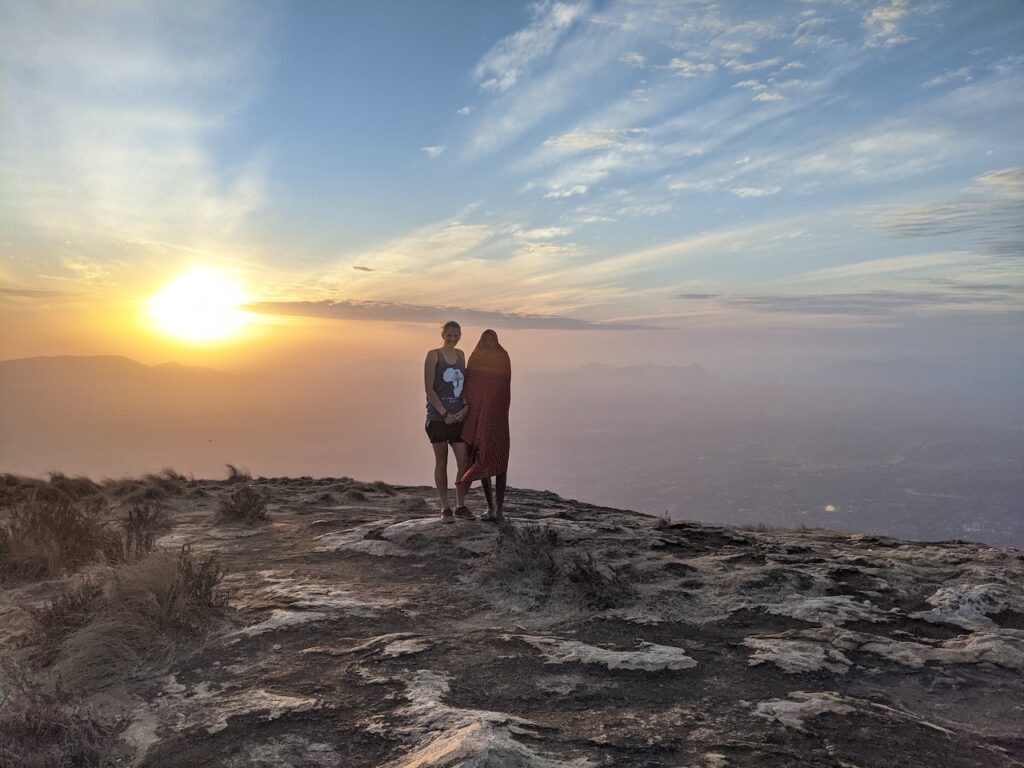
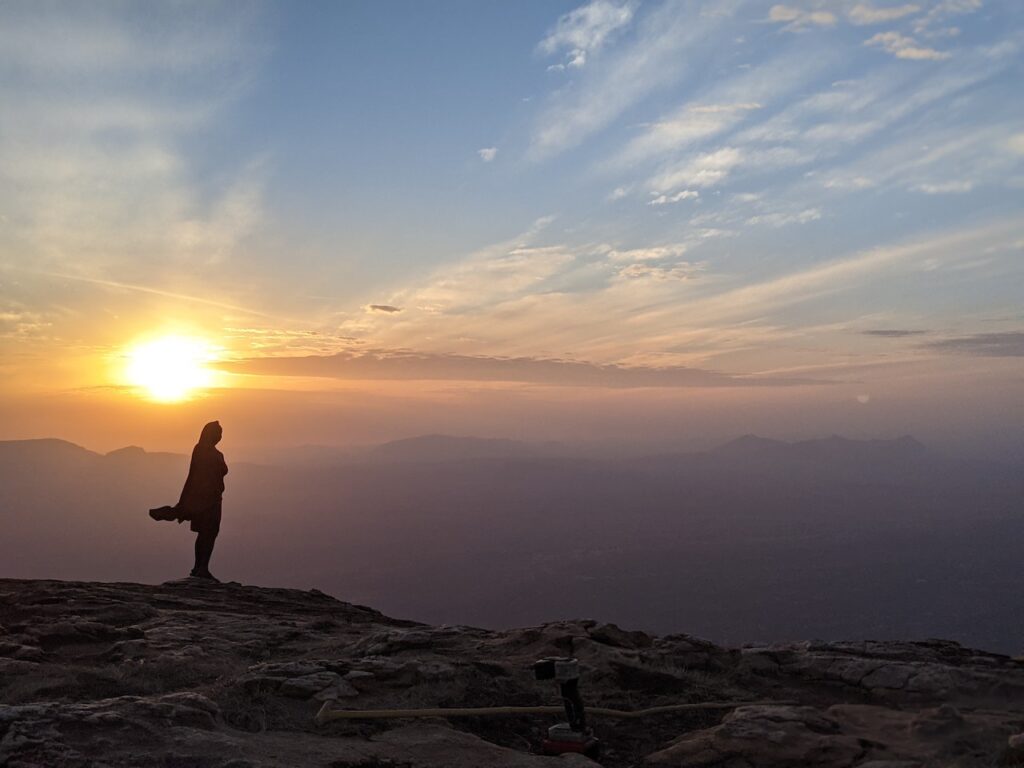
The way back down
On the way down, you would probably think it would be faster but actually, you have to go a lot slower as it’s slippery and steep. I feel on my bum 4 times but to be fair my trainers have all but run out of grip! You can also now see where you are going so you take a bit longer as you can appreciate the views and observe the fauna around you.
At the top of the mountain, there are also cycad trees. Cycads are the oldest living seed plants on the planet, they are much older than dinosaurs even (www.iol.co.za).
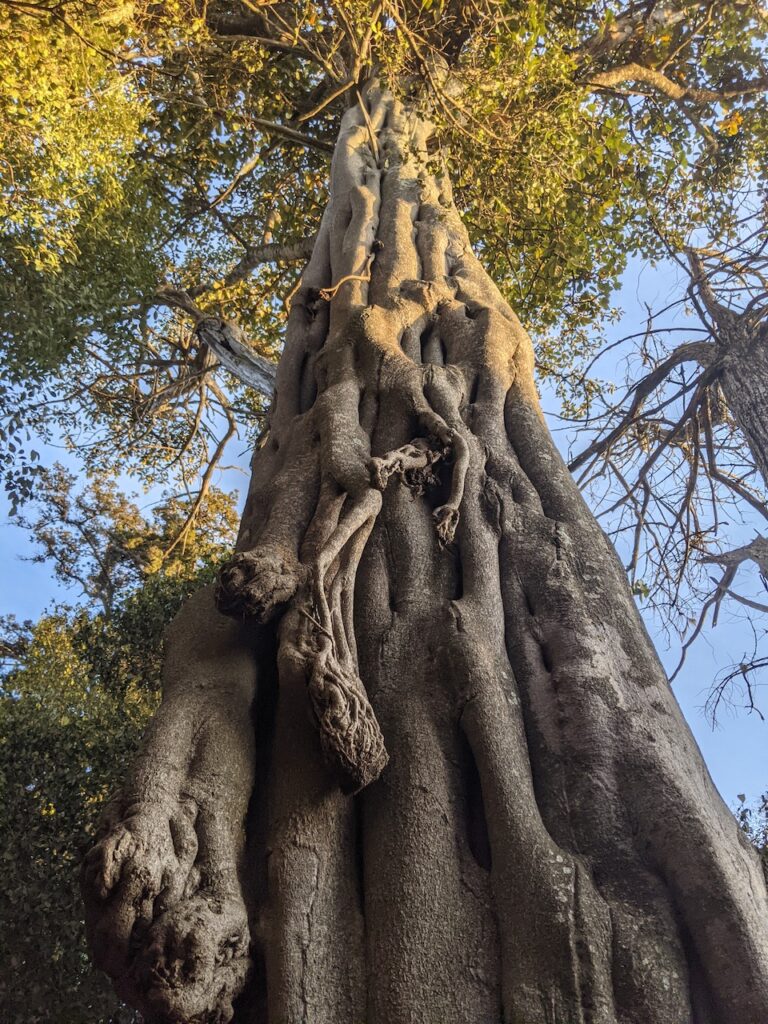
Ancient cycads
Stopping to observe the ancient cycads and beautiful trees that adorn the top of the mountain
It actually took us about the same amount of time to get down and we were back at camp by 8:30 am having brunch. Overall I would say it’s a challenging enough climb to get that sense of achievement once you get to the top and the views are definitely worth it!
Accommodation
We stayed at Sabache Campsite which is at the foot of the mountain. The campsite was basic but fine, it has clean toilets and showers (with cold water). There is also a watchman who looks after your stuff and keeps the vervet monkeys away.
There is also a lodge at Sabache which has ensuite rooms and porches with amazing views of the mountain. However, it does look like it hasn’t been used in a long time and could definitely do with some updating to get it back to its prime.
Costs
The hike and camping and conservation fees for the both of us cost just $70. This was resident rate which makes it a very reasonably priced weekend activity. On top of that, there are tips for the guide and askari.
If you enjoyed this blog about climbing Mt Ololokwe way, why not share it for others to read
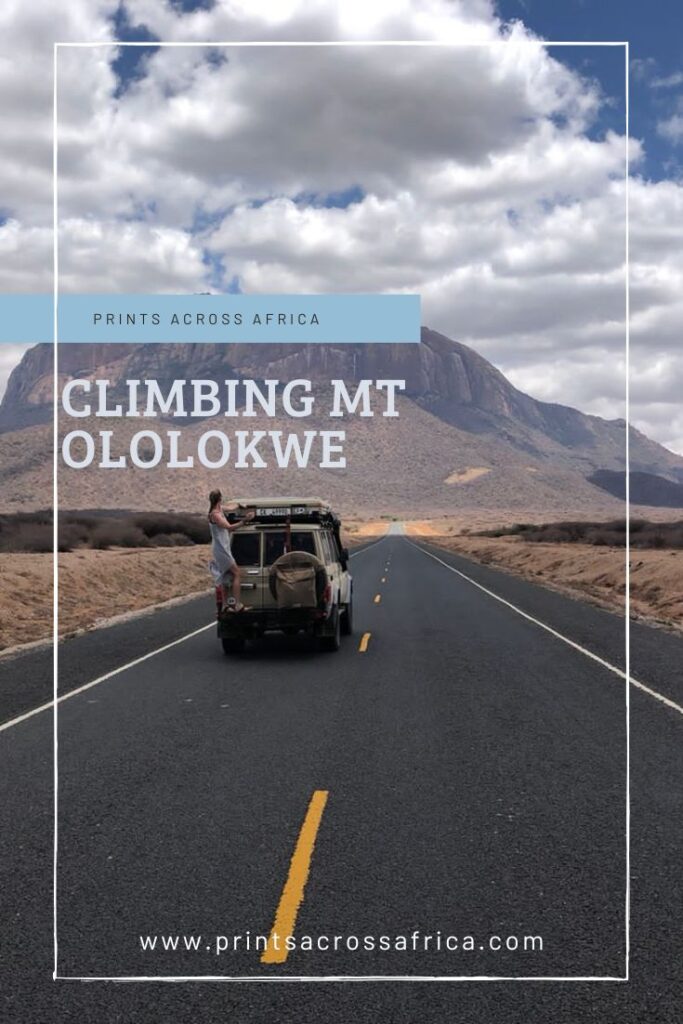
Want to see what else there is to do in the area, check out these other blog posts:

